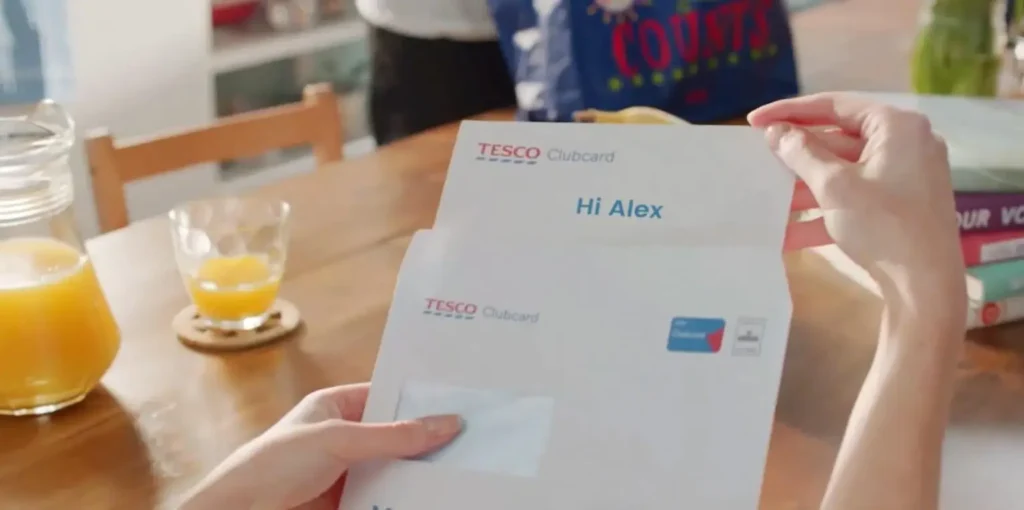Understanding the psychology behind customer engagement can help you inspire your audience to take action. When you know how to drive action through effective engagement, you’ll experience higher ROI in your business. That’s because customer engagement is critical to your business’s success.
Many companies design their products and services using the principles of behavioral psychology. Likewise, marketers must understand the psychological triggers that move customers to not only engage, but to act. In marketing, evoking emotion is one of the most effective ways to inspire specific customer actions.
The importance of creating an emotional connection between your customers and your brand can’t be understated. Customers who feel a deep, complete connection to your brand are 52% more valuable to your business than the average satisfied buyer. That means you should be invested in weaving emotion throughout your marketing efforts.
Want to know more about exactly how the psychology of emotion can work for your business? Let’s get into it.
Emotion Drives Action
We are emotional beings who think we’re rational. But in reality, some of the most significant decisions in our lives are emotionally driven. What we buy, who we vote for, even who we choose to marry — are primarily emotional, or “feeling-based,” decisions. This is tricky because our brains do not make these decisions at the conscious surface level; rather, much of the decision-making process happens unconsciously.
If our biggest decisions are driven by unconscious emotion, then it’s reasonable to say that smaller, everyday decisions are, too. Retail therapy makes us feel happier, even though it might not be good for our wallet in the long run — which will also have an emotional impact. We turn to comfort foods when we’ve had a bad day. Our favorite brands tug at our heartstrings, alleviate stress and help us feel supported.
People think they make decisions based on rationality, but what they are much more likely to do is make an emotional decision and then search their brain for a rational justification of that decision. Maybe you buy discounted pre-sale tickets to a concert, rationalizing that it’s practical to get the best deal. In reality, you’re driven by FOMO; if the tickets sell out after pre-sale, you won’t be able to go.
To further complicate things, we’re prone to what is known as the bias blind spot. Essentially, humans tend to believe we’re less biased than the people around us, although that’s not really the case.

Psychologists say we make our best decisions when emotion and rationality go hand-in-hand, but we must first become aware of our emotions. We will continue to believe we’re completely rational until we understand how powerfully our emotions propel us forward.
Emotions — such as excitement, regret (or potential regret), hope, fear, guilt, interest and sympathy — are key psychobehavioral drivers in our decision-making processes.
Tapping into these emotions through your marketing efforts can profoundly affect how customers respond to your communication. Take a look at this customer loyalty video from Kensington Tours, for example, which recaps a series of international travel adventures. By sparking a sense of nostalgia and excitement for the future, this video inspires the customer to book their next dream trip.
Humans Are Predictably Irrational
Because of how strongly emotions drive us, expecting people to be rational is irrational.
Our brains are wired for heuristics, a fancy term for “mental shortcuts.” These shortcuts are necessary and yet inherently problematic.
If our brains needed to process every piece of the near-infinite data they receive, we’d never get anything done. Whether we’re deciding something as simple as what to wear or as complicated as who to marry, the information overload would be immobilizing.
Our mental shortcuts are necessary in the sense that they allow us to “get the job done,” even though they may not be rational. That’s because, evolutionarily, these shortcuts have developed for survival. For example, a shadow moving in our peripheral vision may make our brain immediately say, “Creature! Danger!” In reality, it’s most likely not a creature, and instead just some laundry blowing in the wind. Still, our unconscious mind has determined that it’s better to be safe than sorry.
Is it rational to react like you’re in danger on an otherwise normal day? No — you simply react because your brain is wired to do so. What this means is that people are predictably irrational. This predictable irrationality is instinctual, and it’s precisely what marketers aim to understand.
Perception vs. Reality in Marketing
Understanding how people respond to perception vs. reality is key in marketing.
When you were startled by the laundry in your periphery, your brain perceived danger. Your unconscious mind signaled fear, so you reacted fearfully. However, the reality was totally different.
This is the power of our perception.
In the iconic book “The 22 Immutable Laws of Marketing,” Al Ries and Jack Trout discuss what they coined The Law of Perception. Here’s what they have to say:
“There are no best products. All that exists in the world of marketing are perceptions in the minds of the customer or prospect. The perception is the reality. Everything else is an illusion.”
What product has the best box? How about the coolest logo? Do you like their celebrity spokesperson? None of these questions actually tell you anything about a product, but your answers reflect your overall perception. It’s this perception that matters in the long term.
What we perceive to be true is often more powerful than what is actually true. Building a marketing strategy that engages the emotions and shapes customer perception of a product, service, or brand can be a powerful way to increase customer engagement and boost your bottom line.
So let’s take that a step further. If perception matters more than reality, how do you control how a buyer perceives your product? For starters, it’s crucial to be intentional about the emotions you want to evoke in your customers.
Here are some compelling tools and tactics you can use to stir your audience’s emotions:
- Visuals have the incredible ability to instantly transport an audience to a new emotional state. When we use evocative visuals such as images, videos and visual art in a marketing strategy, we can connect with viewers on an emotional level.
- Storytelling is an ancient means of effectively controlling how people feel. A skilled storyteller holds great power over people and societies. As Robert McKee (the author famous for his Story Seminars) puts it: “Storytelling is the most powerful way to put ideas into the world today.” From a marketing perspective, telling emotional stories well can lead to greater ROI.
- Other people are also incredibly effective at influencing our emotions. This is, in part, why we marvel at an actor when they truly emote. We are wired for empathy; seeing someone cry can evoke sadness while watching someone laugh creates joy. Including emotional messages in your marketing can be particularly moving for your audience.
- Music can have a tremendous emotional impact. People will often turn on music to help adjust their mood and reflect the feelings they want to experience (happiness, sadness, romance, etc).
- Regular, authentic engagement can help nurture positive emotions in your customers. Whether you’re reaching out to welcome someone during the customer onboarding process or re-engaging to reduce customer churn, fostering those relationships is important.
Audio, visual and social methods of effectuating desired emotions are some of the most powerful “feeling generator” tools mankind has developed. For this reason, the moving picture has long claimed the title of “king of entertainment;” TV, movies and web videos alike use all of these tools to evoke an emotional response from viewers.
Video content that stirs emotions can move your viewers to action. Take this video by Cadbury for its Cadbury Glow chocolate launch, for example. The video is shot from the first-person perspective and depicts one partner in a relationship collecting memories from over the years. He places each memory into a special box for their anniversary, which magically transforms into Cadbury Glow. Who wouldn’t feel inspired to do something thoughtful for a loved one after seeing a video like this?
How Feeling Informed Influences Decisions
While people make their decisions based on emotions, they still want to feel informed. This allows us to delude ourselves into thinking our decisions are rational. For this reason, people mostly make decisions once they’ve reached a surface level of understanding — enough to convince themselves they’re making an informed choice.
But here’s the thing: You can make a choice that feels informed, yet it’s still irrational and emotionally driven. Decision-making doesn’t require the depth of understanding we think it does. The lack of depth actually needed in the decision-making process was underscored in this study from Oklahoma state, in which:
- 82% of survey respondents supported mandatory labeling of food containing GMOs
- 80% also supported mandatory labeling of food containing DNA
Sounds good — until you realize we’d be labeling all food “contains DNA” because all plants and animals contain DNA. It would essentially be a meaningless label.
Nevertheless, survey respondents felt informed enough to answer the question, thus highlighting how willing people are to make decisions based on feeling informed, rather than actually being informed. On an emotional level, it felt right for concerned individuals to want DNA disclosed on food labels — except that, upon deeper examination, this desire was utterly irrational.
This leads us to the big question: How do we market so that people make purchasing decisions based on emotion, while making them believe their decisions are both rational and informed?
Data: Too Much or Not Enough?
When you give people data, they feel better informed to make decisions — but how much is too much?
When you give them just enough data, they feel empowered to make decisions — as opposed to too much data, which causes them to get overwhelmed. Information overload causes people to freeze when making choices, which is not an ideal outcome. Instead, you want to create a balance that gives them what they need without getting them in over their heads.
Post on
An effective option is to provide just enough data by making sure the data is personalized. This means providing a person with information that is relevant to them as an individual, therefore empowering them to make decisions that are driven by emotion, but that they feel are still rational. That’s the balance a marketing tool such as Personalized Video can provide to your customers.
Providing the user not just with general data, but with their personalized data, is partly what makes Personalized Video so powerful. We’ve already discussed why video is seen as the king of entertainment. Personalized Video forces a viewer’s emotional response up a notch further by adding the additional element of personalization, therefore grabbing their attention while informing and engaging them.
Take this example from Adidas, which celebrates Boston Marathon competitors and their accomplishments. Elements of this video have been personalized to celebrate each individual’s specific achievements. Snapshots, timestamps and milestones were captured throughout the race and incorporated into each participant’s video. Each attention-grabbing segment inspires a sense of pride, accomplishment and transformation in the competitor — and just might motivate them to return for the following year’s race.
Time To Take Action
The nature of Personalized Video means viewers don’t just take any action, they take the optimal action.
Data-driven Personalized Video provides viewers with unique content, including tailored messaging, customized next steps, and individual CTAs. That means we can control and reinforce the desired optimal action we want a particular viewer to take.
If you’re ready to take some action yourself and learn more about our Personalized Video platform, get in touch with our team. We’d love to help you get started.





